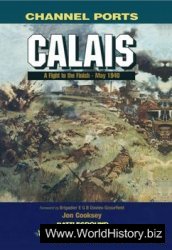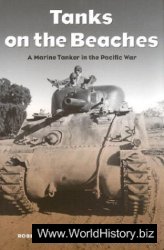Paradoxically, the shock tactics of the blitzkrieg offensive were bom out of the great improvements that the nineteenth century had seen in defensive warfare. It was Moltke who reasoned that if the defense was formidable, then tactics must be devised to provoke the enemy to attack and attack again until defeated.
From this idea came the Kesselschlacht theory—encircle the enemy so that he is forced to break out of the encirclement, then use “defensive firepower” against him. If the encirclement cannot be achieved by an outflanking movement, then the enemy front must be pierced (preferably in several places) and then encircled. This was exactly the method used against Poland in September 1939. It had been carried out almost entirely by infantry.
In 1914 the German failure had been partly due to the exhaustion of the infantry, many of them reservists no longer fit enough for grueling route marches, followed by battle. Learning from this, the German Army in Poland in 1939 used highly trained active divisions and sent reservists to other duties. It worked; Guderian, Manstein, and Haider all remarked on the strenuous efforts of the infantry.
Infantry weapons had also changed by that time. In the First World War, machine guns had usually been water-cooled models with heavy tripods and three-man crews—one to fire, one to feed the belt of ammunition, and one to bring more of it. Air cooling produced a lighter weapon that one man could carry and use. Compared to the old Maxim gun of 125 pounds, the MG 34 used by the German Army in 1939 weighed about 25 pounds. So an MG 34 was issued to each ten-man rifle squad. Each platoon had a small (50 mm) mortar and although the infantry had very conventional bolt-action rifles, these heavier weapons gave them great flexibility and fitted well to the way in which improvisation and initiative were encouraged among the rank and file.
The panzer division rifle brigade consisted of three battalions of infantry, each made up of five companies, one of which had machine-gun platoons and a heavy (81 mm) mortar platoon.
More remarkable was the way in which the infantry were given the means of providing their own artillery support. Antitank guns went to the infantry regiment (as well as to the antitank battalion), as did small artillery pieces of about the same weight (880 pounds). The gun crew could manhandle these into position. The heaviest infantry gun was a 1.5-ton howitzer—15 cm s. I.G.33—which could lob a large shell 6,000 yards.




 World History
World History









